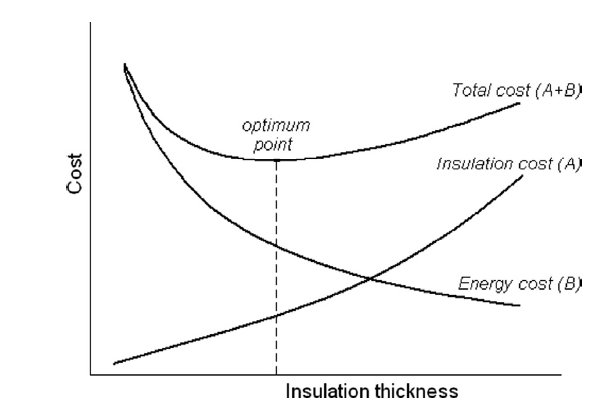Thermal Insulation in Industry
In a global market where competitiveness is constantly growing and in which environmental issues are of paramount importance to companies’ operations, energy efficiency is becoming ever more relevant. The more efficient a company gets, the more economically viable it becomes and fewer are its environmental impacts.
In this article, we focus on the Effect of installing thermal insulation solutions on the equipment that makes up the circuits of thermal fluids transport and storage.
Insulation: yes or no?
In the next set of images, it is possible to see an example of the effect of the implementation of insulation has on piping in which high-temperature steam is transported.

Figure 1 – Photography (left) and thermography (right) of a duct transporting high-temperature steam.
As shown in the thermography, the outer surface of the valve (without insulation and exposed to the air) is close to 185 ºC. On the other hand, the pipe’s surface on both sides of the valve is covered with thermal insulation, the surface of which is at a temperature of about 40 ºC.
The fluid running through the valve and pipe is the same, meaning that the difference of temperature on the outer surface of the valve and pipe is the consequence of the insulation. Because of its installation, it is possible the loss of significant amounts of energy to the surrounding atmosphere, resulting in substantial savings to the facility’s owner.
Insulation
Has a way to minimize energy and insulation costs, it is fundamental to optimize the thickness of the insulation. The thicker it is, the lower the energy transfer through the surfaces in touch with the fluid to the atmosphere will be, and consequently so will the energy costs. However, it is not feasible to apply insulation excessively thick, since the material, installation and maintenance costs will increase with the amount applied, annulling the gains obtained from the energy savings (Kaynakli, 2013).
Thus, depending on the specific characteristics of each equipment and its function, there will always be an “optimal thickness” which optimizes the total implementation costs and maximizes the gains to be had. This will take into account the expenses with insulation and the resulting energy savings, as illustrated in the next image.

Figure 2 – Optimal thermal insulation thickness in terms of investment costs and energy savings (Kaynakli, 2013).
Advantages of installing insulation
When it comes to energy efficiency investments, the instalment of thermal insulation is one of those that has the best cost-benefit ratio: it is one of the cheapest measures to implement and has low maintenance costs, having a return of investment period between 6 months and 2 years (Benefits of Insulation, 2020).
Insulating equipment offers yet multiple other advantages (Benefits of Insulation, 2020):
- Reduction of energy costs;
- Improvement of the production process;
- Increases workers safety on site (it creates an additional barrier that prevents direct accidental contact with hot surfaces);
- Prevents condensation on the surface of the equipment, avoiding damage from the development of rust (in cases where low-temperature fluid is used);
- Contributes to the reduction of equipment maintenance expenses on a medium/long term;
- Minimizes the need to use heating or cooling in the areas where the insulated equipment is;
- Reduces the noise level;
- Decreases the emission of pollutants;
- …
It is possible to apply insulation to different types of devices: pipes, valves, flanges, storage tanks, heat exchangers, boilers, … Every equipment through which a thermal fluid runs (whether hot or cold) can be insulated. There are also multiple possible options to be used and different types of materials. The ideal solution has to be analysed case-by-case, depending on the equipment itself, its function, the operational characteristics of the facility, the thermal fluid, among several other factors.
It is, therefore, of the utmost importance that a project to implement insulation solutions follows an extensive study of the installation and its current condition. That will allow to define which is the best solution to be adopted taking into account the individual needs of each client.
At TecnoVeritas you can rely on the experience of a devoted team of engineers to perform an energy efficiency study of your installation, proposing the best solutions in a personalized format and taking into account your individual needs, always aiming at maximizing your return on investment.
Bibliography
Kaynakli, O. (26 de Setembro de 2013). Economic thermal insulation thickness for pipes and ducts: A review study.
Kushal G. Ambli, B. M. (12 de Julho de 2019). Heterogeneous composites for low and medium temperature thermal insulation: A review.




